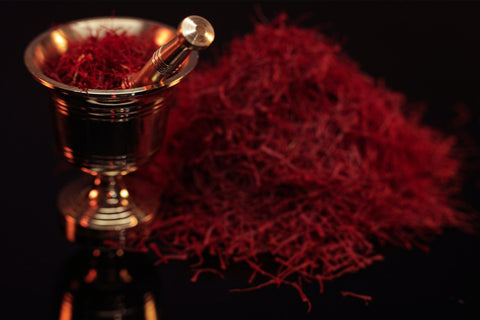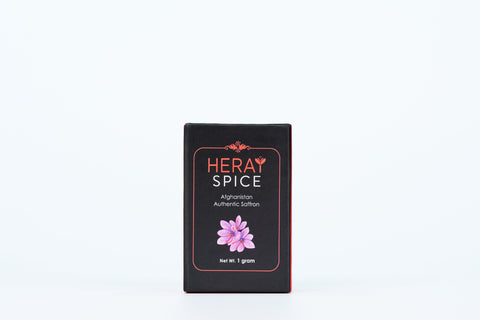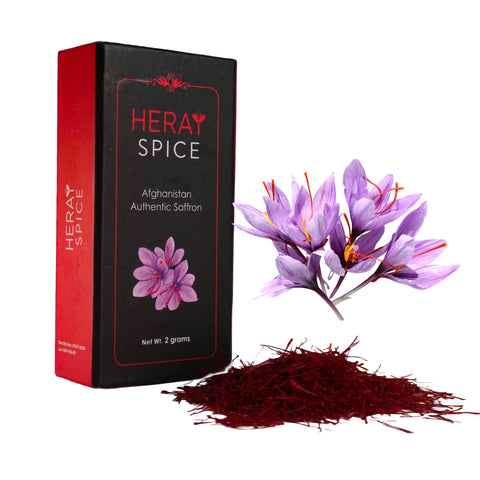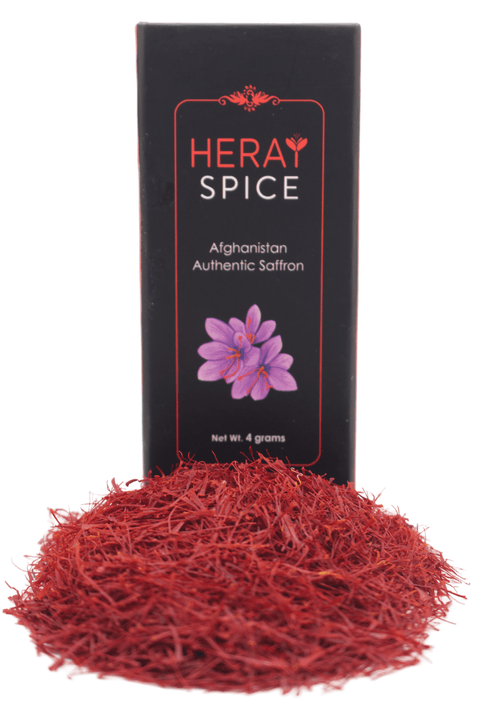Saffron, the world's most expensive spice, is a culinary treasure known for its vibrant colour, distinct flavour, and myriad health benefits. Its high cost often leaves us wondering why such a seemingly small, delicate thread is worth its weight in gold. In this blog, we will delve into the reasons behind saffron's sky-high price to uncover the secrets of this precious spice.

Photo credit: marlik saffron
1. Labor-Intensive Harvesting Process
The first key factor contributing to saffron's expense is the labor-intensive harvesting process. Saffron threads are actually the stigma of the Crocus Sativus flower. Each flower produces just three delicate crimson threads, which must be carefully hand-picked during a short harvest window that lasts for only a few weeks in the autumn. This labor-intensive process is described in detail in the article from Reader's Digest (source 1), which highlights that it takes roughly 150 flowers to produce just one gram of saffron. This meticulous hand-harvesting significantly increases the cost of saffron.
2. Vast Land Required for Cultivation
Saffron cultivation requires a significant amount of land, and it's highly sensitive to environmental conditions. The Crocus Sativus flower thrives in regions with a specific climate and well-drained soil. Martha Stewart's article (source 2) sheds light on this aspect, emphasizing that saffron cultivation demands a vast amount of land to produce substantial yields. Moreover, the bulbs must be replanted annually, adding to the overall cost of production.
3. Time-Intensive Drying Process
After the delicate saffron threads are painstakingly harvested, they must undergo a time-intensive drying process. This drying process is explained in the Better Homes & Gardens article (source 3) which highlights that the stigmas are typically dried in controlled conditions to preserve their flavour and colour. The drying process is slow and precise, involving a careful balance of temperature and humidity. Any deviation from these optimal conditions can result in a loss of quality and flavour, thus making the drying process a critical, yet costly, component of saffron production.
4. Strict Quality Standards
Saffron is graded based on its colour, flavour, and aroma. This makes the spice even more exclusive and costly, as only the highest-quality saffron can command a premium price. The sourcing of saffron that meets these strict quality standards is explored in Martha Stewart's article (source 2), shedding light on the rigorous criteria for saffron classification. These standards ensure that consumers receive the finest saffron, but they also contribute to the overall cost.
5. Limited Geographic Range
Saffron production is limited to specific geographic regions, further impacting its price. The spice is primarily cultivated in countries like Iran, India, and Spain, as detailed in the Reader's Digest article (source 1). These areas have the ideal climate and soil conditions for saffron growth, but the limited geographic range restricts its availability and drives up its cost.
6. Demand and Market Forces
Saffron's unique flavour and vibrant colour make it a highly sought-after spice in the culinary world. Its use in both traditional and modern cuisine ensures a constant demand, which, combined with the factors mentioned earlier, drives up its price. Additionally, market forces, including supply and demand fluctuations, currency exchange rates, and geopolitical factors, can further affect the price of saffron.
In conclusion, saffron's status as the world's most expensive spice can be attributed to a combination of labor-intensive harvesting, vast land requirements, meticulous drying processes, strict quality standards, a limited geographic range, and market forces. While saffron may remain a luxury ingredient, its unique qualities and unparalleled flavour make it a spice well worth its weight in gold for those who can savour its exquisite taste.
Resources:
1) https://www.bhg.com/what-is-saffron-6889743
2) https://www.marthastewart.com/what-is-saffron-7551914
3) https://www.rd.com/article/why-saffron-worlds-most-expensive-spice/










